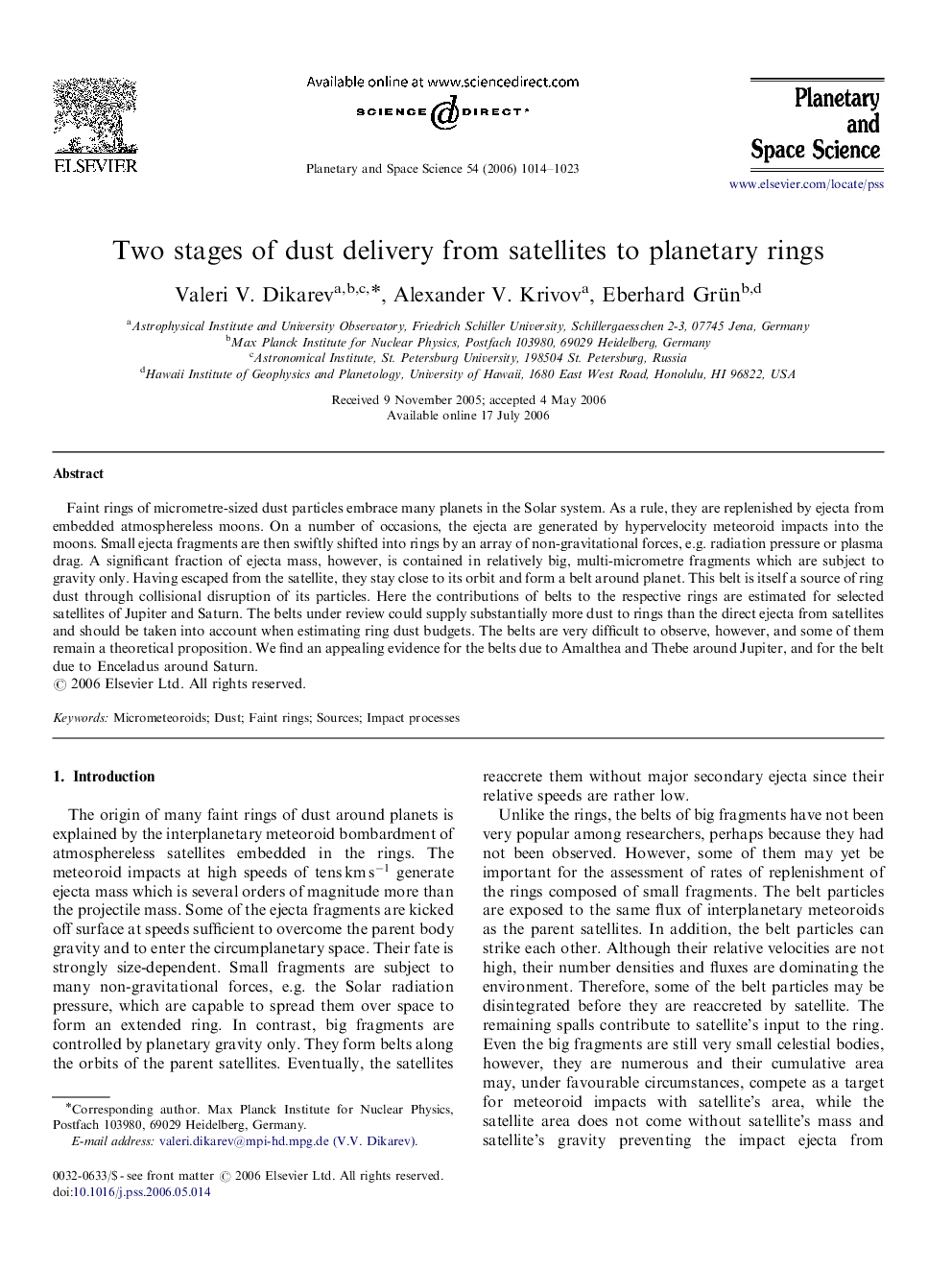| Article ID | Journal | Published Year | Pages | File Type |
|---|---|---|---|---|
| 1782794 | Planetary and Space Science | 2006 | 10 Pages |
Faint rings of micrometre-sized dust particles embrace many planets in the Solar system. As a rule, they are replenished by ejecta from embedded atmosphereless moons. On a number of occasions, the ejecta are generated by hypervelocity meteoroid impacts into the moons. Small ejecta fragments are then swiftly shifted into rings by an array of non-gravitational forces, e.g. radiation pressure or plasma drag. A significant fraction of ejecta mass, however, is contained in relatively big, multi-micrometre fragments which are subject to gravity only. Having escaped from the satellite, they stay close to its orbit and form a belt around planet. This belt is itself a source of ring dust through collisional disruption of its particles. Here the contributions of belts to the respective rings are estimated for selected satellites of Jupiter and Saturn. The belts under review could supply substantially more dust to rings than the direct ejecta from satellites and should be taken into account when estimating ring dust budgets. The belts are very difficult to observe, however, and some of them remain a theoretical proposition. We find an appealing evidence for the belts due to Amalthea and Thebe around Jupiter, and for the belt due to Enceladus around Saturn.
